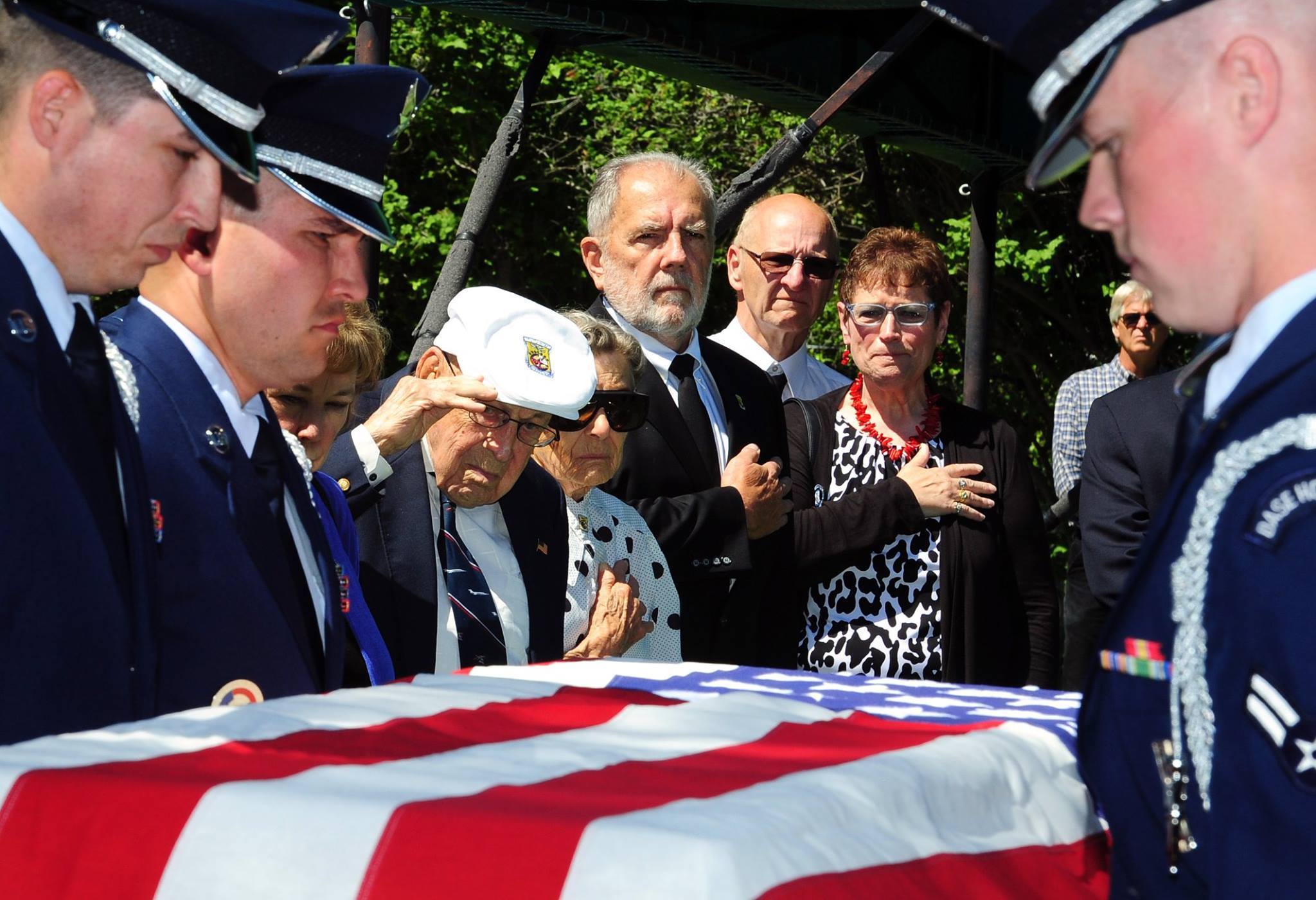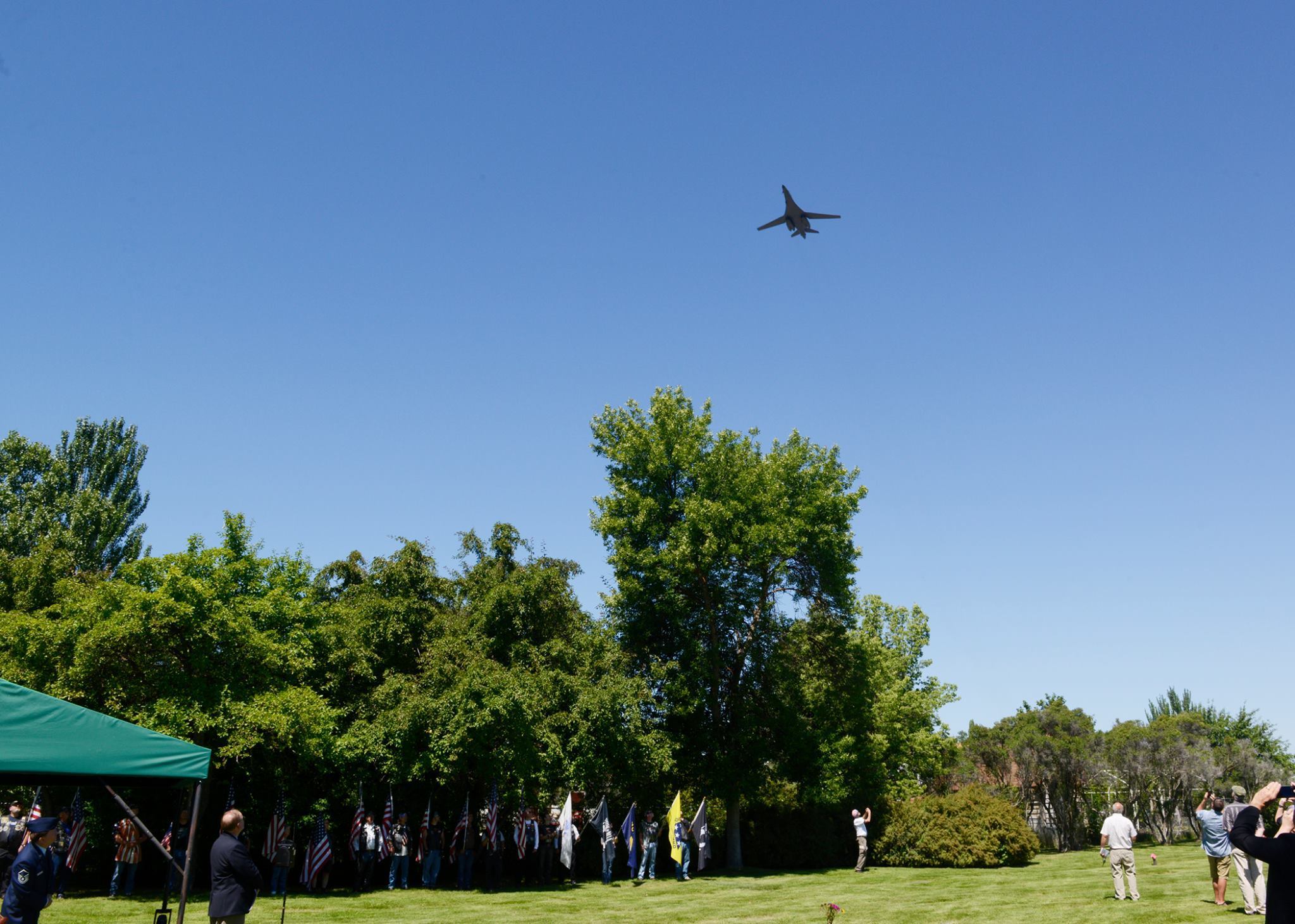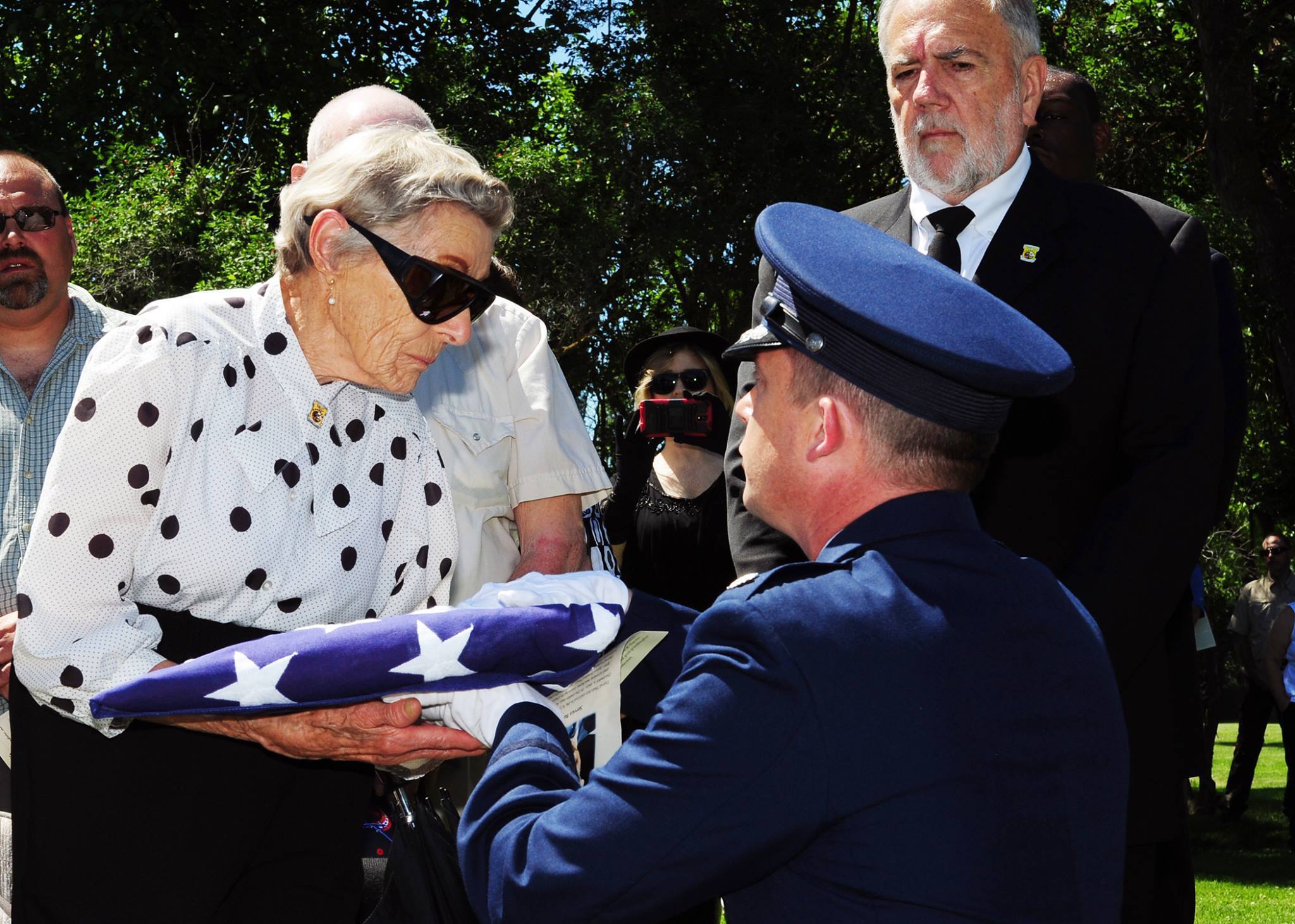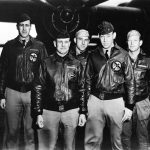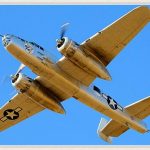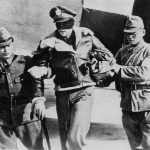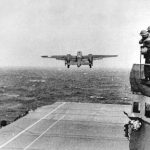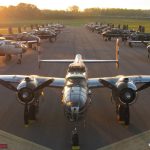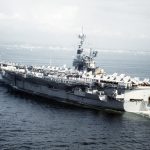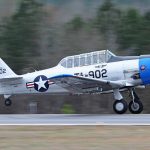Story by 2nd Lt. Annabel Monroe
Seventy-four years after the historical Doolittle Tokyo Raid, Staff Sgt. David J. Thatcher, the second to last remaining Doolittle Raider, was laid to rest at the age of 94 on June 27 in Missoula, Montana. Thatcher was celebrated with military honors and multiple aircraft flyovers at Sunset Memorial Garden Cemetery. Air Force officials, friends and family from across the country attended the ceremony. Also in attendance was retired Lt. Col. Richard Cole, the last surviving Doolittle Raider. The Malmstrom Air Force Base Honor Guard rendered respects as a symbol of Thatcher’s legacy of promoting the mission and preserving a rich heritage. The American flag-draped casket was carried by six Airmen to Thatcher’s resting place as a resounding silence spread throughout the crowd. A five-member firing party delivered the three-volley salute with 15 shots against the mountain backdrop, into the crisp blue horizon. The sound of taps echoed from nearby trees as the flag was carefully folded, 13 times, leaving only the visible blue field with stars representing Thatcher’s service.The flag was presented to Dawn, Thatcher’s wife of 70 years, on behalf of the President of the U.S., the Air Force and a grateful nation for his honorable and faithful service.“My father was a very gentle, humble and compassionate individual,” said Jeff, Thatcher’s son and president of Children of the Doolittle Raiders. “He was full of dignity and grace, with the soul of an angel and heart of a lion.”
The B-1B, from the 28th Bomb Wing at Ellsworth Air Force Base, South Dakota, and a B-25, owned by John Sessions, performed slow-speed flyovers in Thatcher’s honor. Ellsworth has a strong tie to the Doolittle Raiders. It is home to three of the four original squadrons that participated in the historic raid: the 34th and 37th Bomb Squadrons and the 89th Attack Squadron. Thatcher was the last surviving Doolittle Raider from Montana. Lt. Col. Edward Saylor, also a Doolittle Raider flight engineer from Brussett, Montana, died January 29, 2015, at the age of 94.
The Doolittle Tokyo Raid was a part of early World War II efforts to turn the tides, increase morale and display a show of force to Japan and the world. Eighty men in 16 different B-25 Mitchell bombers departed on the historical raid. The 16 crews took off from the USS Hornet (CV-8), led by Col. Jimmy Doolittle to fly over Japan’s main island and dropped bombs on vital defense resources within Tokyo. The plan was to land in a part of China that was not infiltrated with enemy soldiers after the mission was complete. At 20 years old, as an engineer gunner in Flight Crew 7, Thatcher took to the skies in a B-25 named Ruptured Duck. The crew crash-landed into sea off the coast of China on April 18, 1942. Thatcher saved four members of the crew by pulling them to safety on the surrounding beach and applying life-saving medical treatment, even though he was injured himself. “I had a bird’s eye view as I was in the turret on top, I could see in every direction. It was a beautiful day when we came in over the beach. Before we reached Tokyo there were six airplanes in formation that came toward us,” Thatcher said in an interview in 2015. “We were flying so low in formation that I’m sure they didn’t see us.”
Seven men never made it home, but the sacrifice of those brave aviators and the remaining 72 men have been celebrated in time honored, custom rich memorials and toasts every year since.
Often referred to as the greatest generation, young men from all across the U.S. stood ready to fight a war in arguably the most difficult time America has ever seen. Thatcher was among these brave men. He completed high school and enlisted into the Army Air Corps Dec. 3, 1940. Thatcher completed the airplane and engine mechanic course in Lincoln, Nebraska, and was prepared for war. In response to the attack on Pearl Harbor, Thatcher was a part of 25 missions to include the Doolittle Tokyo Raids, the first bombing in Rome and operations in both England and Africa. The humble veteran was often quoted saying he “was only doing (his) job.” In 1944, Thatcher returned to Missoula, Montana, got married and worked as a clerk and postman. Thatcher is recipient of the Congressional Gold Medal and Air Force Silver Star. His other decorations include the Distinguished Flying Cross, Air Medal with four oak leaf clusters, and the Chinese Army, Navy and Air Corps Medal. “Be prepared for anything you might run into. We weren’t,” said Thatcher when offered the opportunity to give Airmen a piece of advice April 17, 2015. There is one remaining Doolittle Raider, Lt. Col. Richard Cole. Cole was the co-pilot of Flight Crew 1. Thatcher’s death leaves a legacy of honor for Air Force history and an overwhelming sense of pride in his closest family and friends.
Story by 2nd Lt. Annabel Monroe
This work, Montana’s last Doolittle Raider honored, by 2nd Lt. Annabel Monroe, identified by DVIDS, is free of known copyright restrictions under U.S. copyright law.







